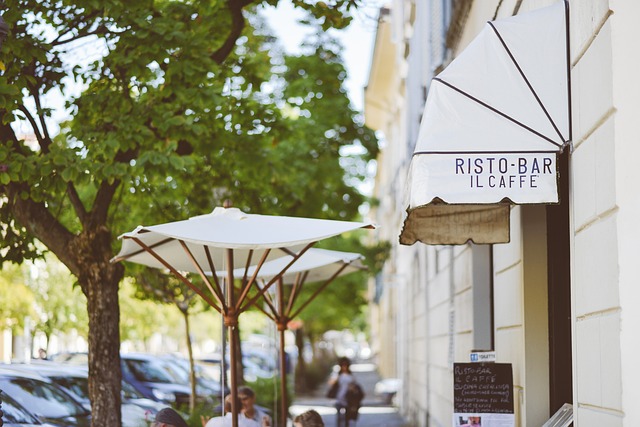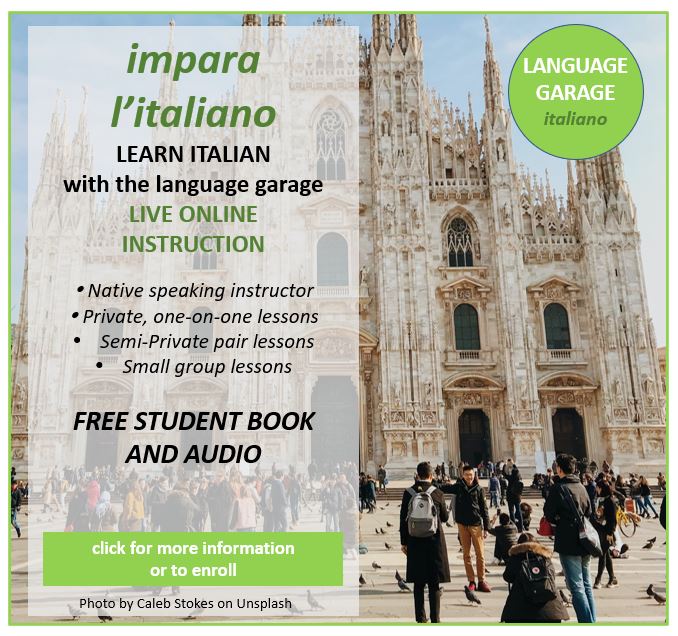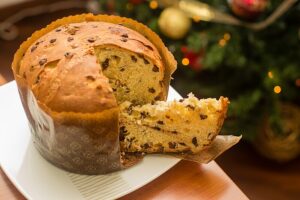Un Caffè, Per Favore. Ordering Coffee in Italy
In this post we’re going to learn about ordering coffee in Italy. Italians take their coffee very seriously. So it’s not surprising that in Italy the time for a un caffè (a coffee) is always sacred, and that there’s a lot of Italian that comes into play when you order or make a coffee. Let’s learn a bit of vocabulary and essentials of ordering coffee in Italy. We’ll start with some important vocabulary for making coffee at home. Then we’ll look at ordering coffee in Italy when you’re out and about. Finally, we’ll see several types of coffee that you can order in Italy, with a description of what to expect if you try one.
A casa (at home)
If you’re a casa (at home), one of the first things you do in the morning is prepare the first coffee of the day with your family moka (coffee maker), also known as una caffettiera. You may have one of the ones that use il caffè macinato (ground coffee) or you might even macinare (to grind) your own chicchi di caffè (coffee beans). Nowadays a lot of people just pop una cialda (a capsule/pod) into una macchinetta a cialde (pod coffee maker). Now you’re all ready to enjoy your coffee, with or without un cornetto (a croissant) or a un biscottino (cookie).
In un bar (at a coffee shop)
Un bar in Italian is not a bar but rather a coffee shop or a café. In Italy you may pop into il bar on your way to work, or during your lunch break, or on your way home to start your evening with a pleasant aroma.
If you’re visiting Italy, ordering in un bar is definitely an experience to remember. But there’s a lot of vocabulary you should know.
Un caffè per favore
If you say posso avere un caffè, per favore (can I have a coffee, please?) or un caffè, grazie (a coffee, thanks), you’re going to get an espresso. The same will happen if you just raise your hand or your finger, or simply nod your head when you get the attention of il/la barista. But naturally, you have many other options if you don’t want an espresso.
Un lungo, per favore
A lungo (long) is an espresso with more water – the water runs just a bit longer than with an espresso, hence the name.
Un americano, per favore
Un americano is also an espresso with extra water. But it’s different from un lungo because in un lungo, all the water is brewed and passes through the grounds. With un americano, extra hot water is just added to an espresso after it’s brewed. Minor detail of a difference? Taste the two and see for yourself!
Un ristretto, per favore
Ristretto means short, and un caffè ristretto is made with less water than an espresso (taking a shorter amount of time), and also finder grounds. With less water, it’s more concentrated than an espresso, but with a shorter brewing time there’s less caffeine and other compounds pulled out of the grinds, so the flavor balance is different.
Un macchiato, per favore
Macchiato means marked, spotted, or stained, which may sound a bit odd, but – trust me – tastes great. Un caffè macchiato is an espresso with just a bit of milk, usually foam. How on earth did the macchiato get its name? One theory is, imagine that you’re a busy barista, making all sorts of different coffees and passing them along to customers or servers. You need a shorthand to distinguish between, say, a regular espresso and one that’s got a bit of milk. So, you get creative, you make a little flourish or design on the top of the espresso with the milk foam. Or maybe it comes from the fact that in a macchiato, you just add a little bit of milk – just a mark or a “stain” to the espresso.
Un caffè freddo, per favore
Un caffè freddo simply means a cold coffee. If you order one, you’ll probably get an espresso that’s poured over a few ice cubes, shaken, and then poured into a glass or cup. Basically an iced coffee, but without any milk or sugar or flavoring in its most basic form.
Un caffè corretto, per favore
Un caffè corretto is a correct coffee. What makes it correct? A bit of alcohol, of course! Usually that’s grappa or sambuca. You can specify what precisely you want to correct your espresso: un corretto alla sambuca, un corretto alla grappa, un corretto al cognac, un corretto al whisky…
Un cappuccino, per…
What? You’re not ordering this after your meal, are you? In Italia, un cappuccino (or un cappuccio) is not an evening drink, and certainly not a dessert. It’s thought of more as a meal in itself, or at least part of a complete and rich breakfast. As you probably know, it’s prepared with latte (milk) and la schiuma del latte (milk foam). It’s enjoyed only in the morning, maybe along with un cornetto (a croissant), or if you’ve got a real sweet tooth, una pasta or un pasticcino (a pastry).
Un caffelatte
Another morning coffee drink is un caffelatte. Latte is of course milk, and un caffelatte is just a glass or cup of milk with a shot of espresso. If you drink it as breakfast, you might enjoy it with un cornetto or un biscottino. Some people even drink it before bed, although this of course isn’t for people who are sensitive to caffeine.
Un caffè sospeso
Now here’s one you may not have heard of. Un caffè sospeso (a “suspended” coffee) is a Neapolitan act of generosity, a particularly Italian way of paying it forward. After you enjoy your coffee in Naples, you can pay for another one as a way of being kind to some stranger who may not be able to afford one. Che carino! How nice!
Get on the road to speaking Italian with the Language Garage!
We hope you’ve enjoyed learning about ordering coffee in Italy. If you’d like to learn more:
- Learn basic Italian with our self-study online Italian course.
- Follow us on Facebook, LinkedIn, BlueSky, Twitter, Threads, Instagram, or Pinterest. We publish lots of Italian vocabulary, grammar, and culture notes, so it’s a great way to pick up some new vocabulary and practice.
- Check out our other posts on Italian language, culture, and more.
- Enroll in affordable, flexible, and personalized private online Italian lessons or sign up for a small group online Italian class.
- Create a free Language Garage account to access tons of Italian vocabulary, grammar, and culture.






